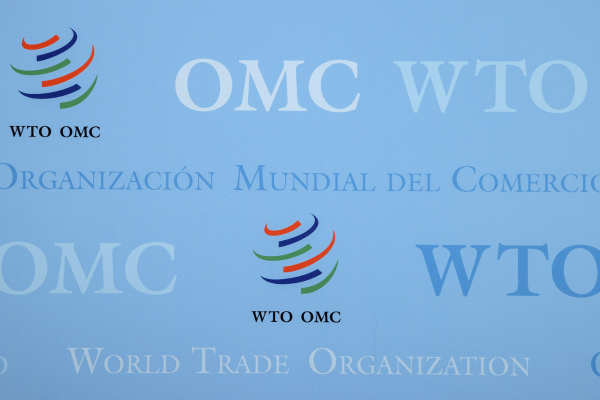Growing business with alternative finance

Bilal Bajwa at Stenn argues that alternative finance is the answer to the underfunding dilemma faced by UK small and medium-sized businesses
The business landscape is increasingly optimistic. According to Prism’s SMB barometer, business confidence improved to -10 in April 2024, up from -12 in March. This reflects a significant recovery from the low of -31 recorded in June 2023.
However, challenges remain. The global geopolitical climate continues to disrupt supply chains, and other major economies, such as Germany and China, are experiencing slowdowns in economic growth.
Funding opportunities across the landscape grow slimmer and slimmer. Small business lending from traditional banks dropped by 22% from 2022 to 2023. A lack of accessibility from traditional banks mean that swathes of the landscape are left underfunded, which often leads to cashflow problems. Without access to financial injections, many of these business risk having their growth stunted; this will snowball to impact the overall output of the economy.
So how can we fix this potentially bleak outlook for SMBs? Alternative finance, based on revenues or invoices, for instance, can be a new route, with faster outcomes that lay the stepping stones for growth. Here’s how.
Banks are breaking up with businesses
The lack of lending options for SMBs from traditional routes, such as banks, won’t come as a surprise for many. Just a handful of weeks ago, there were headlines announcing that lenders were “debanking” small businesses as high street banks prioritise larger enterprises or ‘safer’ bets in the market.
With lenders closing more than 140,000 business accounts so far this year, there is a clear gap in both understanding how best to serve the SMB community and the opportunity it presents.
As small businesses rightly feel neglected by traditional institutions, they need to be asking themselves:
- Is this lender able to sufficiently support my scale-up journey?
- Am I seeing enough return to offset the lengthy approval times, stringent application requirements and underwhelming loan conditions?
The statistics speak for themselves. Small businesses need to embrace the break-up with traditional finance providers and understand there are other trusted alternatives available with providers that fundamentally get scale-up challenges ,and are actively addressing the issues.
Supercharge growth with alternative finance
Large sections of the SMB landscape are quickly moving toward alternative finance options. In fact, the British Business Bank’s Small Business Finance Markets report revealed that for the third consecutive year, challenger and specialist banks account for a higher share (59 per cent) of total gross lending than the big five banks (41 per cent). A trajectory that suggests that it’s soon to become the go-to choice.
New entrants into the market are providing innovative and flexible options for businesses. For example, if an e-commerce business spots an investment with short-term demand – let’s say £5,000 to manufacture 400 cowboy boots, following an overnight popularity of western clothing due to a new Beyoncé album - alternative lenders can provide this capital within a matter of days, rather than weeks.
Specialist lenders can also provide tailored support to new founders, with many focusing on early-stage businesses. This close relationship between lender and business, right from the very beginning, ensures that financing is perfectly aligned to both the business’ objectives but also to its growth runway. When the lender fundamentally understands the business, it’s easier to advise on how capital can help achieve their goals.
Matching the pace of SMBs
Alternative financers are widely available and ready to help, but SMBs must understand the options available to them; these funding options can be a valuable route to turbocharge their scale-up journey.
Digital-first lenders use technology to provide a best-in-class experience. Meanwhile, traditional banks still are overly reliant on legacy processes that do not fit modern SMB requirements for capital.
Paperwork, unnecessary processes and rigid payment terms are not within the capacity – timewise – of founders and business owners. Access to cashflow can be the difference between onboarding the new customer, purchasing key resources or expanding into a new market. That’s why market challengers use AI and automation to expedite the process, conduct fast, fair and transparent risk assessments, so applications can be processed in 48 hours – not weeks or months.
It’s this technological environment that means SMBs do not have to settle for less. Financing options like revenue-based financing or invoice financing, whereby unpaid invoices can be converted into immediate working capital are grounded in emerging applications like AI to deliver flexibility and scalability when SMBs need it most. Capital becomes the springboard for growth, rather than an inhibitor to progress.
The SMB lending landscape is awash with legacy processes that are no longer fit for purpose. Too many banks neglect scale-ups and misunderstand the journey they are on. Against this backdrop, alternative forms of finance can be a lifeline. These financiers not only deliver flexible access to cashflow, but can work with SMBs to ensure capital injections match their growth ambitions.
Small businesses are the engine room of our economy, and each individual business deserves no less than fair access to capital to support their success.
Bilal Bajwa is Chief Technology Officer at Stenn
Main image courtesy of iStockPhoto.com and acilo

Business Reporter Team
You may also like
Most Viewed
Winston House, 3rd Floor, Units 306-309, 2-4 Dollis Park, London, N3 1HF
23-29 Hendon Lane, London, N3 1RT
020 8349 4363
© 2024, Lyonsdown Limited. Business Reporter® is a registered trademark of Lyonsdown Ltd. VAT registration number: 830519543





